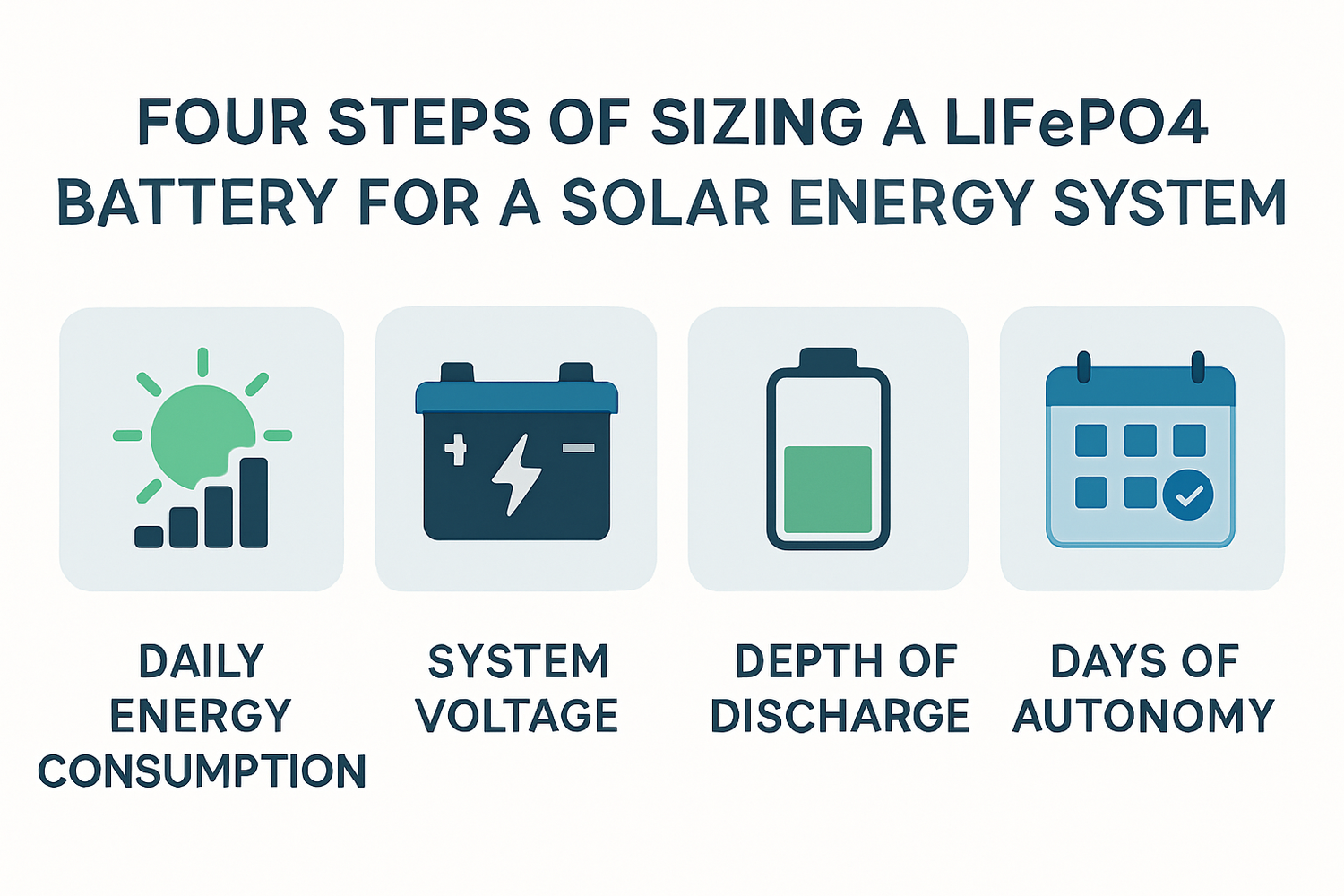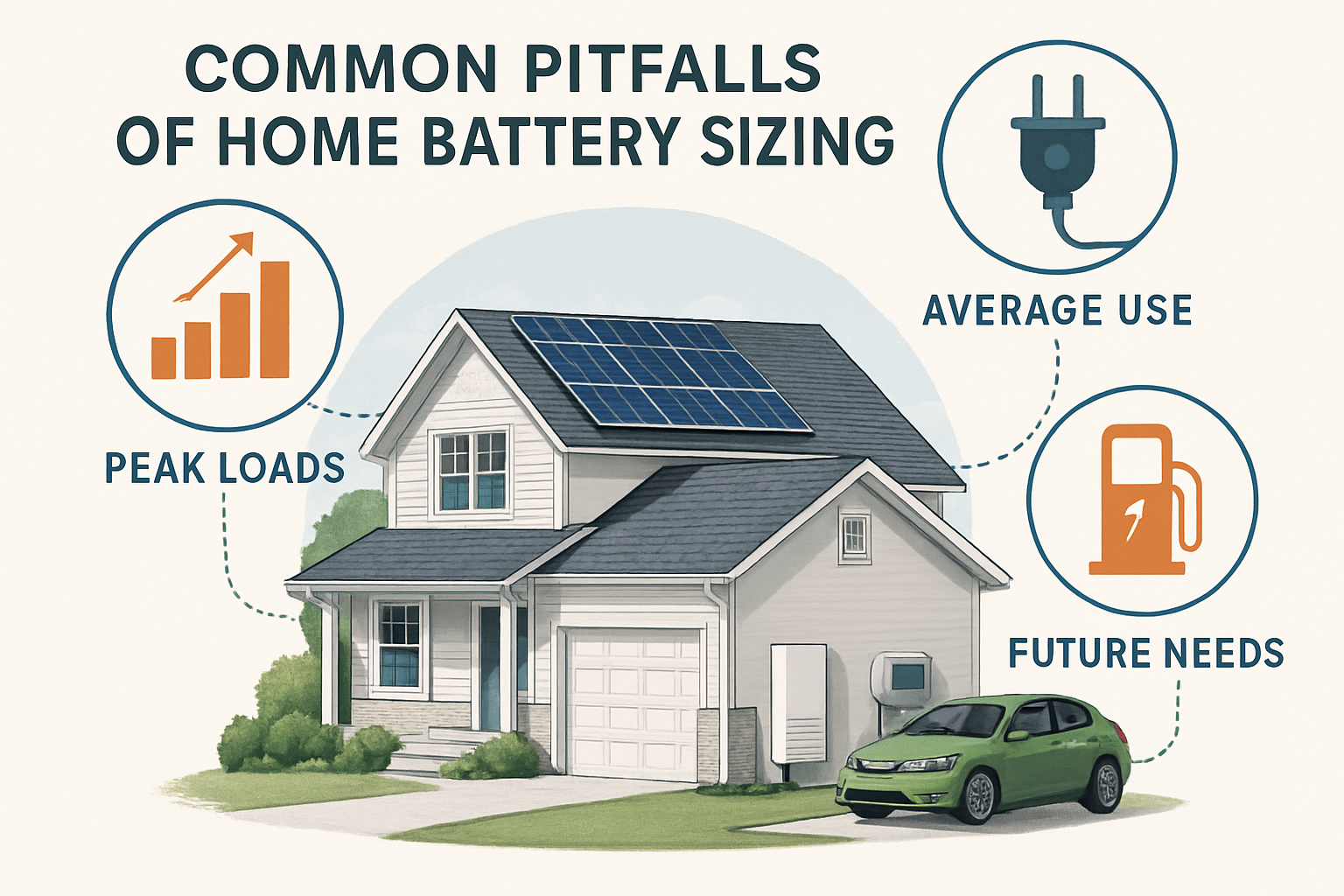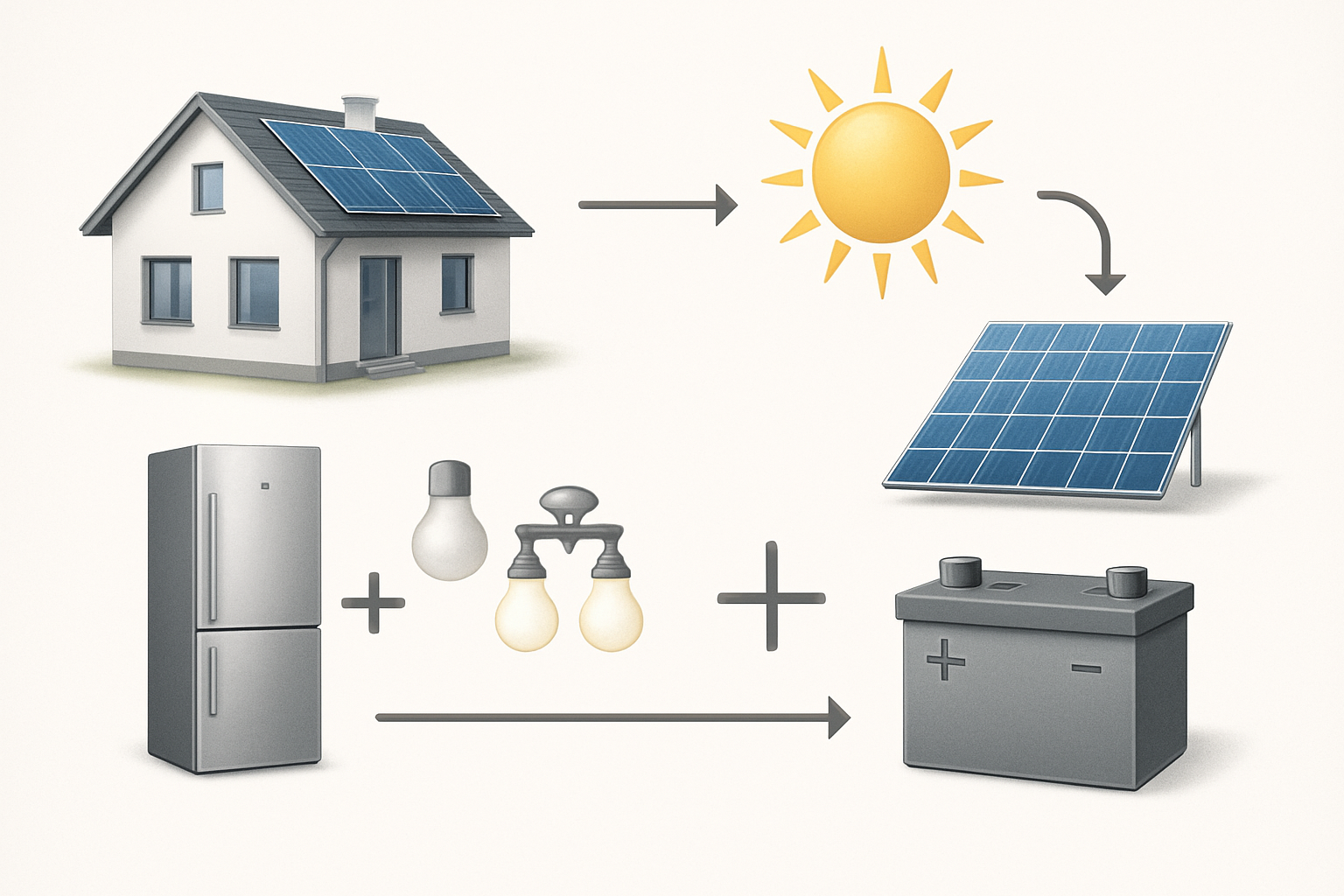Properly sizing a Lithium Iron Phosphate (LiFePO4) battery is the foundation of a resilient and efficient solar energy storage system. A correctly sized battery ensures you have reliable power when you need it, extends the lifespan of your investment, and maximizes the return from your solar panels. This guide provides a straightforward, step-by-step calculation method to eliminate guesswork and empower you to design a system tailored to your specific energy needs. With global investment in clean energy technologies rapidly increasing, as noted in the IEA's World Energy Investment 2023 report, optimizing each component of a solar system is more important than ever.
Foundational Concepts for Accurate Sizing
Before calculating your battery capacity, it's helpful to understand a few key terms that form the basis of energy storage calculations. A solid grasp of these concepts will make the sizing process clear and intuitive.
Watts, Amps, Volts, and Watt-hours
Think of electricity like water flowing through a pipe. Voltage (Volts) is the pressure, Amperage (Amps) is the flow rate, and Wattage (Watts) is the total power delivered. Energy is power used over time, measured in Watt-hours (Wh). For example, a 100-watt light bulb running for 10 hours consumes 1,000 Watt-hours (or 1 kilowatt-hour, kWh) of energy.
Depth of Discharge (DoD) and State of Charge (SoC)
Depth of Discharge (DoD) refers to the percentage of the battery's capacity that has been used. State of Charge (SoC) is the opposite—the remaining charge. LiFePO4 batteries have a significant advantage over traditional lead-acid batteries because they can be safely discharged to 80-90% DoD without significant degradation. Lead-acid batteries, by contrast, are typically limited to a 50% DoD to preserve their lifespan. This means a LiFePO4 battery provides much more usable energy for the same rated capacity.
System Voltage (12V, 24V, 48V)
Solar energy systems operate at a specific voltage, most commonly 12V, 24V, or 48V. The choice affects the other components in your system. Higher voltage systems, like 48V, are generally more efficient for larger energy needs because they operate with lower current. Lower current allows for the use of thinner, less expensive wiring and reduces energy loss as heat.
A Practical Four-Step Calculation Method
Follow these four steps to accurately determine the right size for your LiFePO4 battery bank. We will use a simple example to illustrate the process.
Step 1: Calculate Your Daily Energy Consumption (Watt-hours)
The first step is to conduct a load analysis. List every electrical appliance you plan to power, its wattage, and the number of hours you expect to use it daily. Multiplying the wattage by the hours of use gives you the daily Watt-hours (Wh) for each device. Sum these values to get your total daily energy consumption.
| Appliance | Power (Watts) | Hours of Use / Day | Daily Energy (Wh) |
|---|---|---|---|
| Refrigerator | 150 W | 8 hours | 1200 Wh |
| LED Lights (x5) | 10 W | 6 hours | 300 Wh |
| Laptop Charger | 65 W | 4 hours | 260 Wh |
| Water Pump | 250 W | 1 hour | 250 Wh |
| Total | 2010 Wh |
Step 2: Factor in Days of Autonomy
Days of autonomy represent your energy safety net—the number of days your system can run without any solar charging, such as during consecutive cloudy days. For grid-tied homes in stable areas, one day may be sufficient. For critical off-grid applications, 2-3 days is a common and reliable target. To calculate, multiply your daily energy consumption by your desired days of autonomy.
Example: 2010 Wh/day × 2 days of autonomy = 4020 Wh
Step 3: Adjust for Depth of Discharge (DoD)
To ensure a long battery life, you should not drain the battery completely. LiFePO4 batteries can safely handle a high DoD, so we will use 90% (or 0.9) for this calculation. Divide your total energy requirement by the DoD to find the true required capacity.
Formula: Total Energy Required / DoD = Required Battery Capacity (Wh)
Example: 4020 Wh / 0.90 DoD = 4467 Wh
Step 4: Convert to Amp-Hours (Ah) at Your System Voltage
Battery capacity is often expressed in Amp-hours (Ah). To convert from Watt-hours, divide the required capacity by your system voltage. Let's calculate for a 24V system.
Formula: Required Battery Capacity (Wh) / System Voltage (V) = Required Battery Capacity (Ah)
Example: 4467 Wh / 24V = 186 Ah
In this scenario, you would need a 24V LiFePO4 battery bank with a capacity of at least 186 Ah.
Beyond the Basics: Refining Your Calculation
While the four-step method provides a solid baseline, a few additional factors can help you fine-tune your sizing for optimal performance and longevity.
Accounting for System Inefficiencies
No energy system is 100% efficient. Energy is lost during the conversion of DC power from the batteries to AC power for your appliances (inverter efficiency) and during charging and discharging. It is wise to add a buffer of 10-20% to your final capacity calculation to account for these losses. For a deeper look into how components like inverters affect overall system performance, you can review this comprehensive analysis of solar storage performance, which highlights the importance of efficiency ratings.
Temperature's Impact on LiFePO4 Performance
Extreme temperatures can affect a battery's performance and lifespan. If your battery bank will be in an environment with very high or low temperatures, consult the manufacturer's datasheet for temperature correction factors. This ensures the battery can deliver the required power under its operating conditions.
Surge Loads and Peak Demand
It's important to distinguish between energy (Wh) and power (W). Your calculation determines the total energy storage you need. However, your battery must also be able to deliver enough power to handle the simultaneous startup of multiple appliances or the high initial surge from devices like motors and pumps. Check the battery's maximum continuous discharge current to ensure it can meet your peak power demand.
Sizing Your Battery for Energy Independence
Calculating the right size for your LiFePO4 battery is a critical step toward achieving reliable, long-term energy independence. By methodically working through your daily energy needs, planning for days of autonomy, and accounting for factors like DoD and system voltage, you can design a system that is both cost-effective and resilient. Proper sizing is not just a technical detail; it is the key to unlocking the full potential of your solar energy investment. This methodical approach is used in projects of all scales, from residential homes to community solar arrays, such as the one in Fayetteville, North Carolina, which used detailed modeling to correctly size its battery system to meet community needs, as noted in a report from the U.S. Department of Energy.
Frequently Asked Questions
Can I use my utility bill to size my battery?
While your utility bill provides a good average of your daily energy consumption, it does not show peak power demand or seasonal variations. For a system designed for backup power or off-grid use, a detailed load analysis as described above is far more accurate and will result in a better-sized system.
What happens if I undersize or oversize my LiFePO4 battery?
Undersizing is a common mistake that leads to insufficient power and can shorten the battery's lifespan due to frequent deep discharging. Oversizing provides more backup capacity, but it increases the initial cost significantly and may not be economical if the extra capacity is rarely used.
How does system voltage (12V vs. 48V) affect my battery bank size?
The total energy capacity you need (in Watt-hours) remains the same regardless of voltage. However, the Amp-hour rating changes. A 4800 Wh system would require 400 Ah at 12V, but only 100 Ah at 48V. Higher voltage systems like 48V are generally more efficient for larger systems because they operate with lower current, which reduces energy loss in the wiring and allows for smaller, less expensive components.





Leave a comment
All comments are moderated before being published.
This site is protected by hCaptcha and the hCaptcha Privacy Policy and Terms of Service apply.